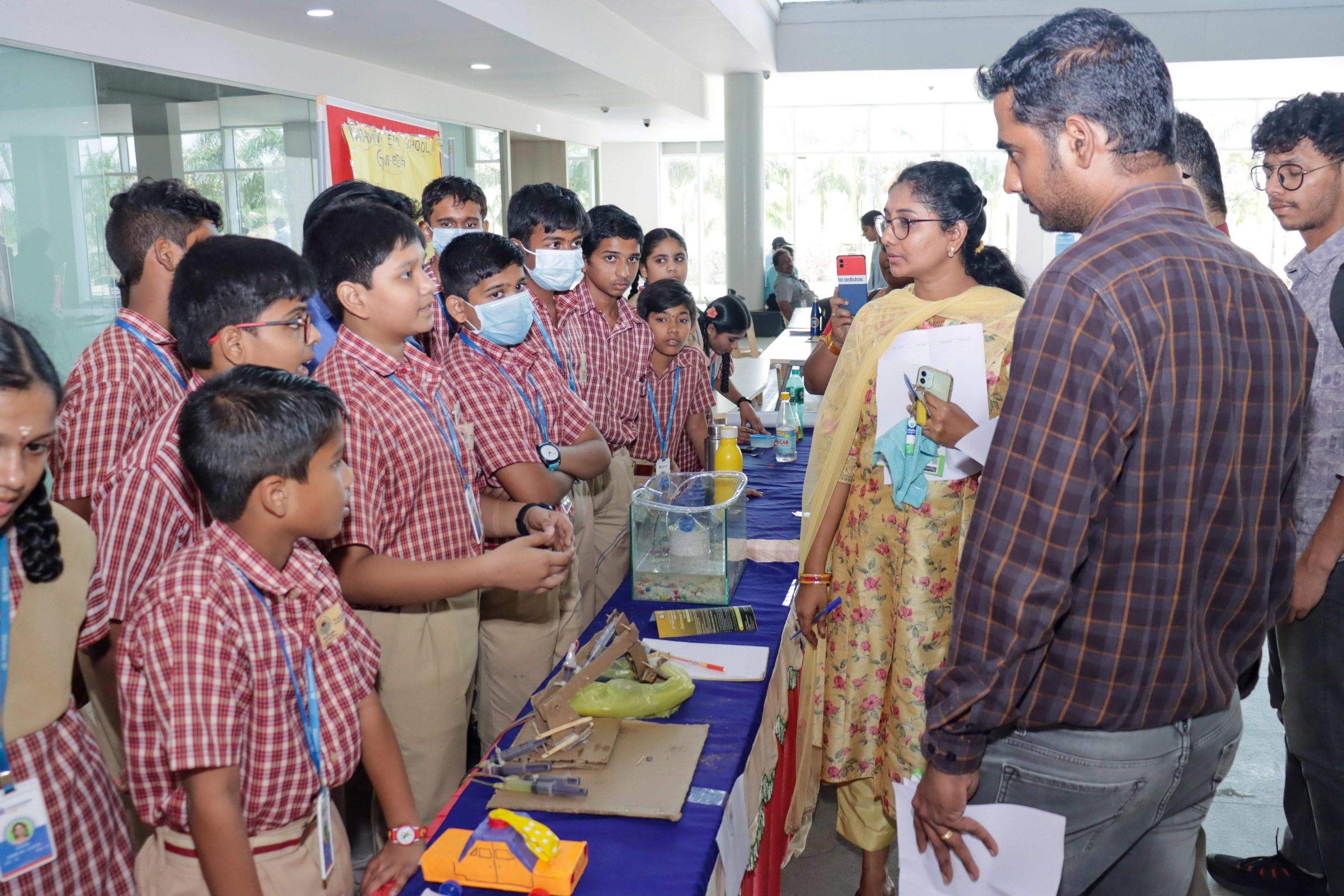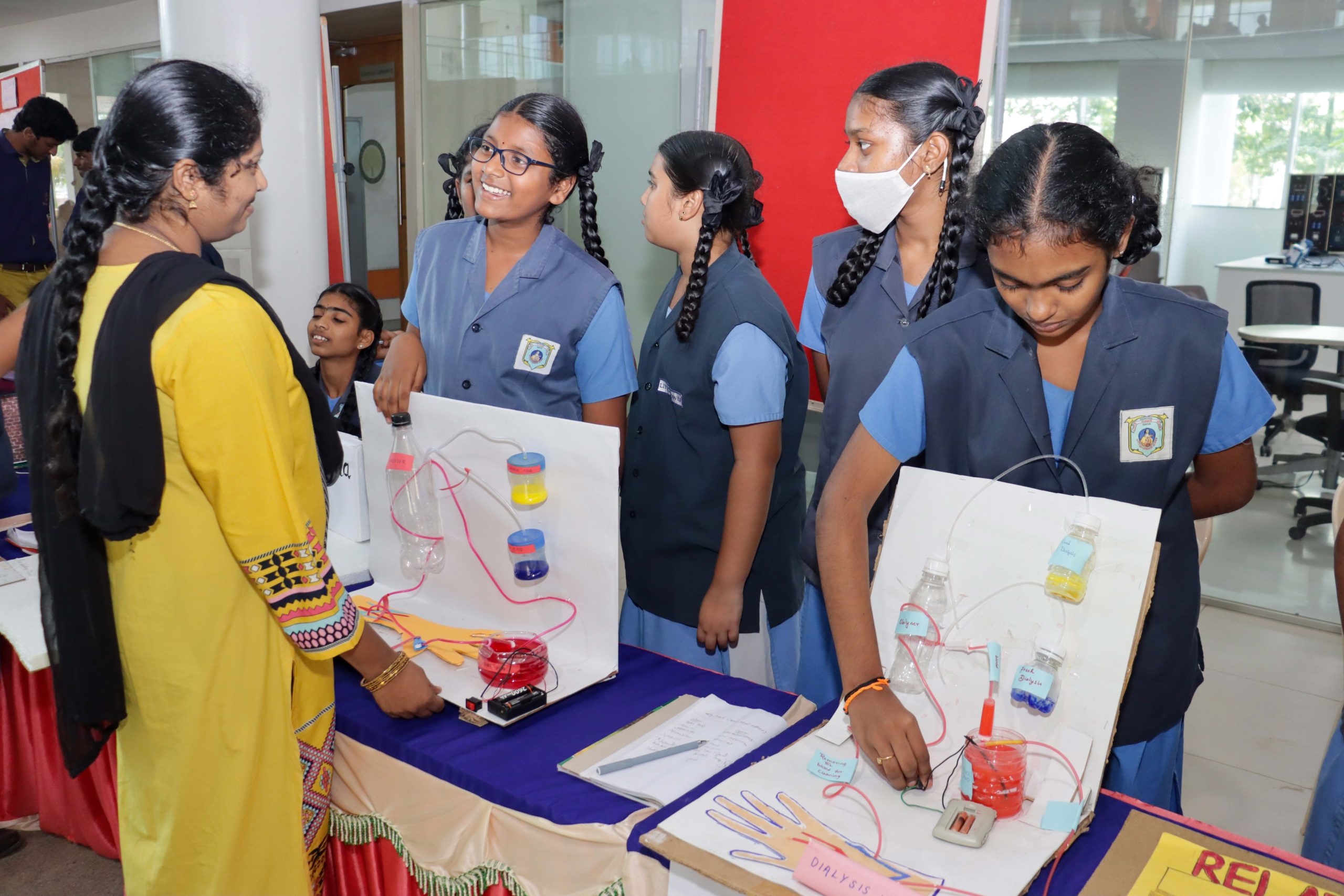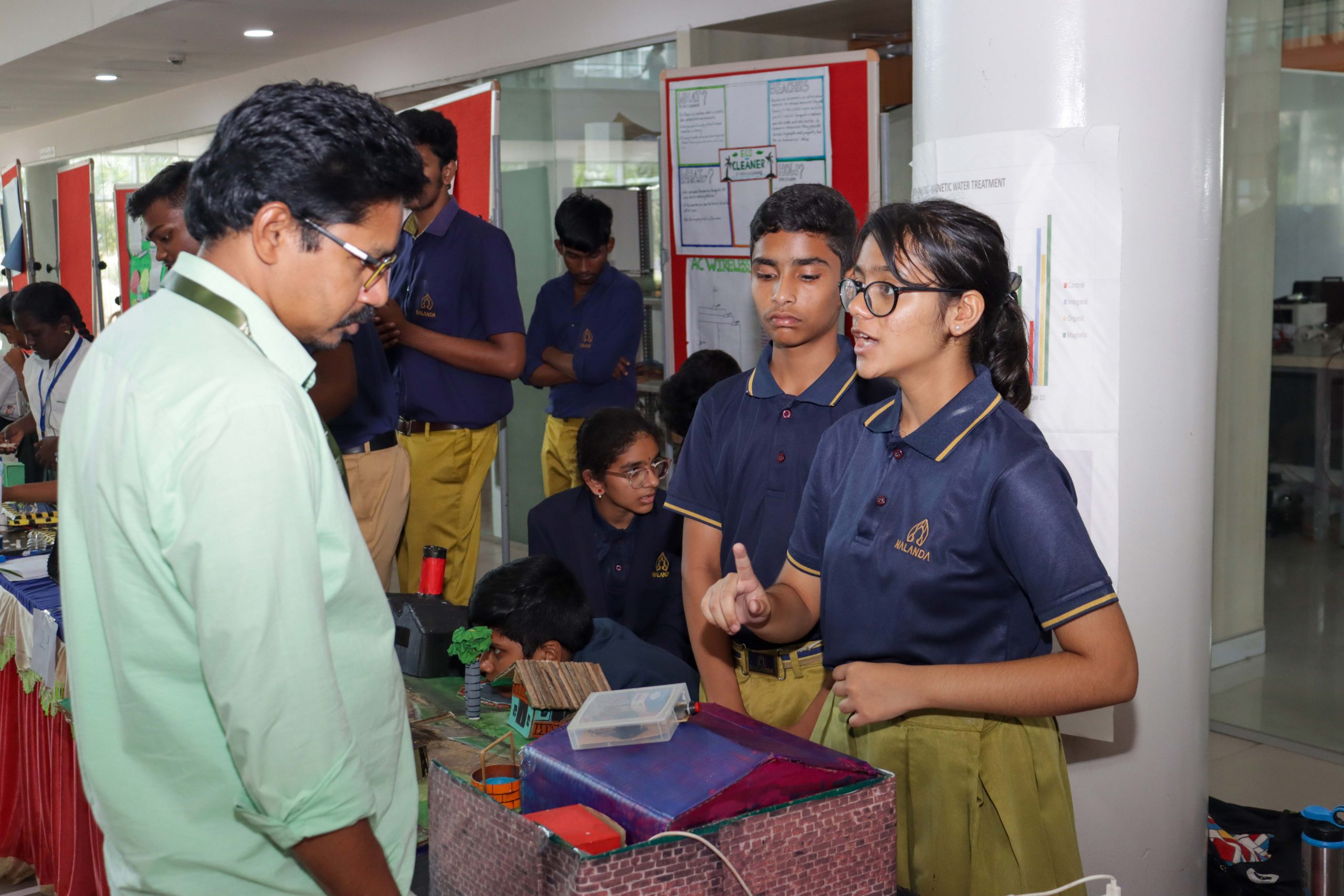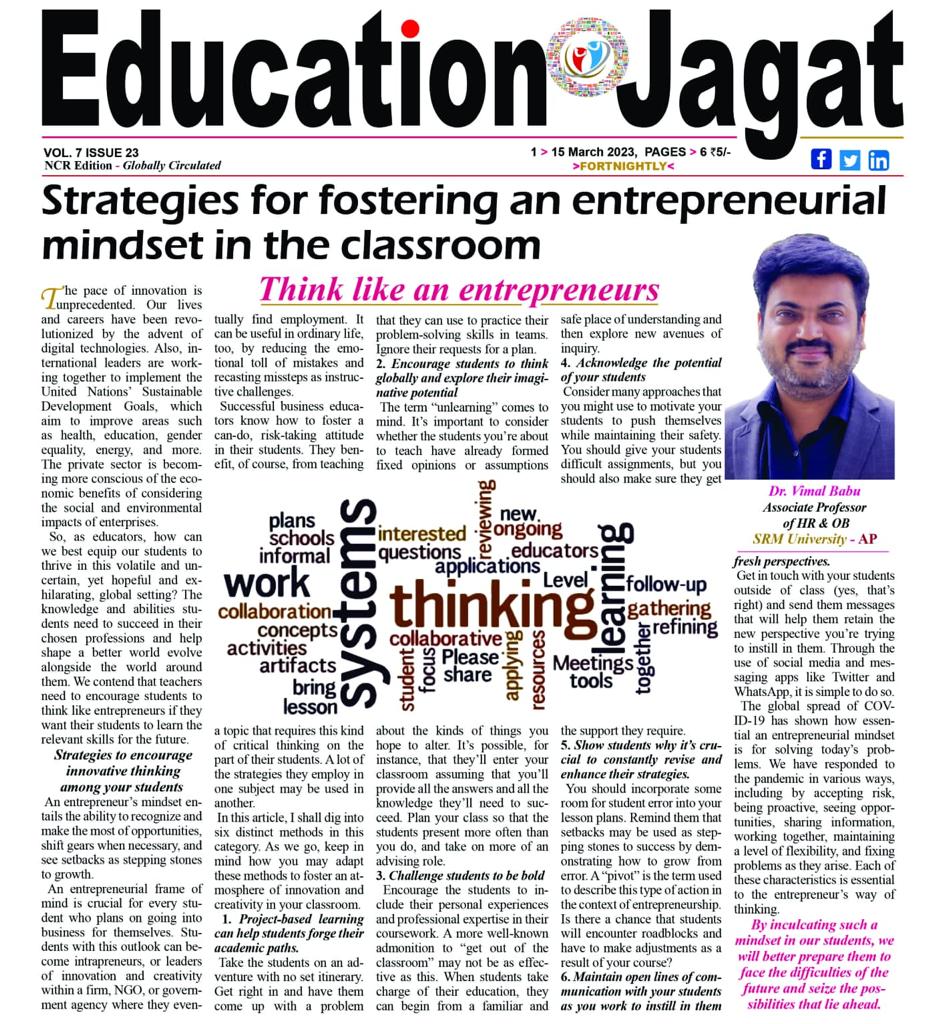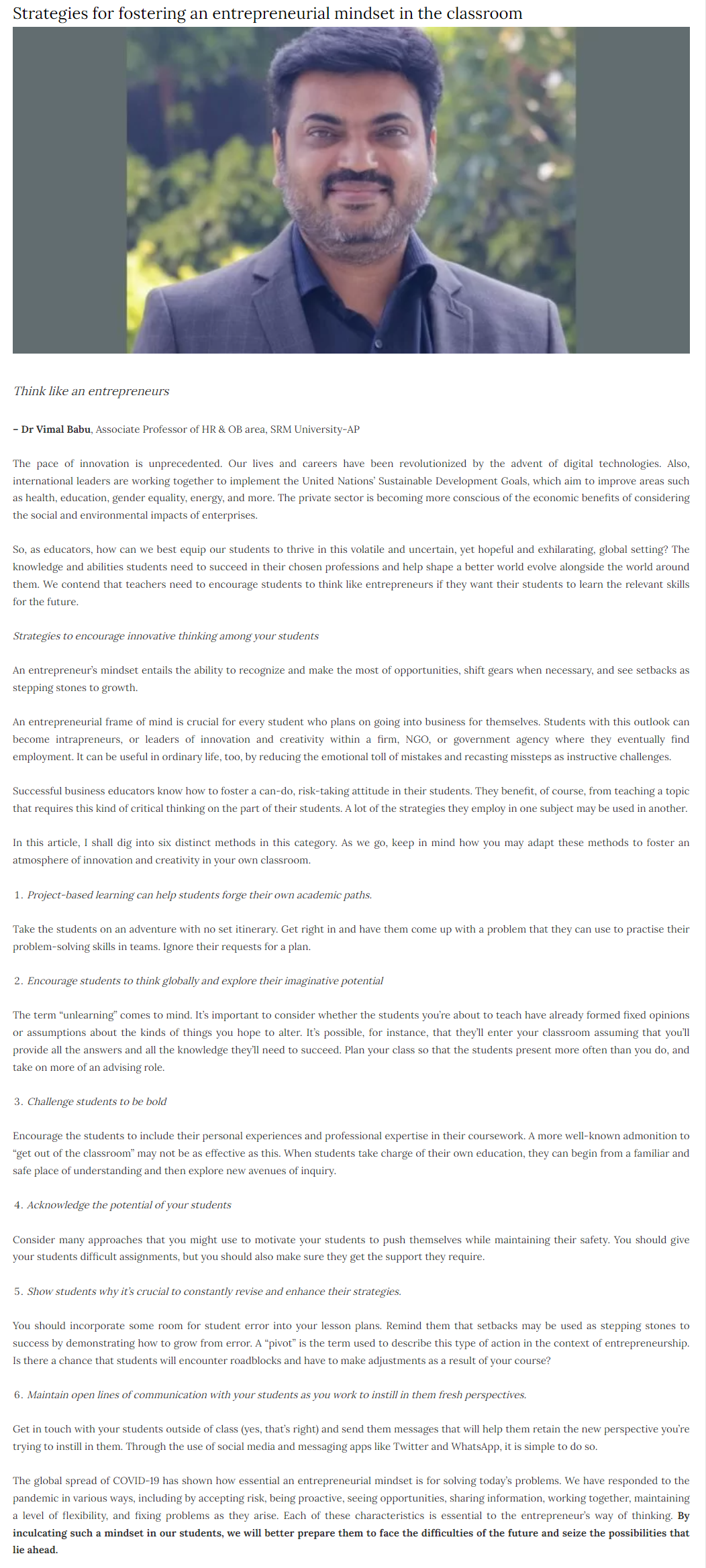All Management Events
- SRM Uiversity-AP holds seminar on green tech March 9, 2023
Deccan Chronicle
Continue reading →

The Hans India
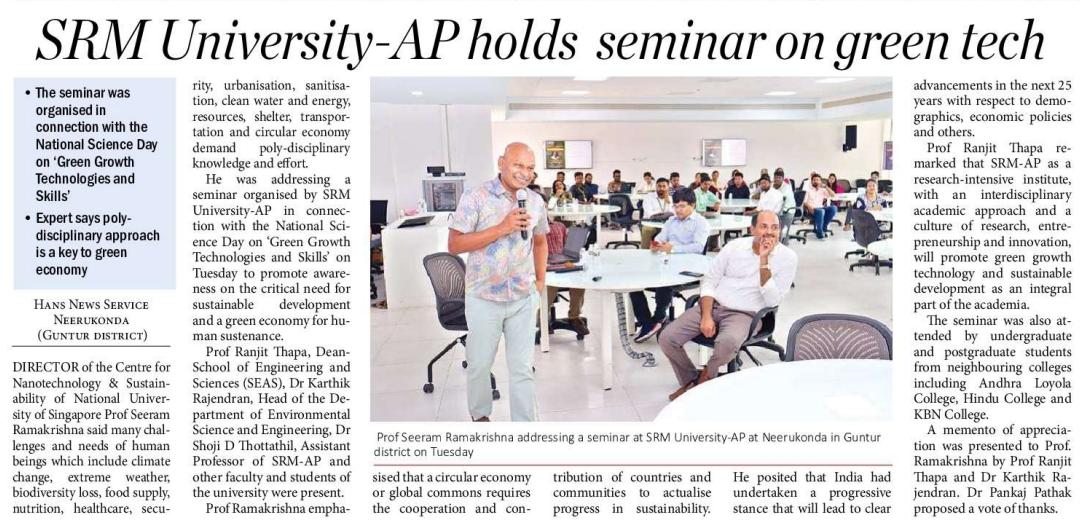
The New Indian Express
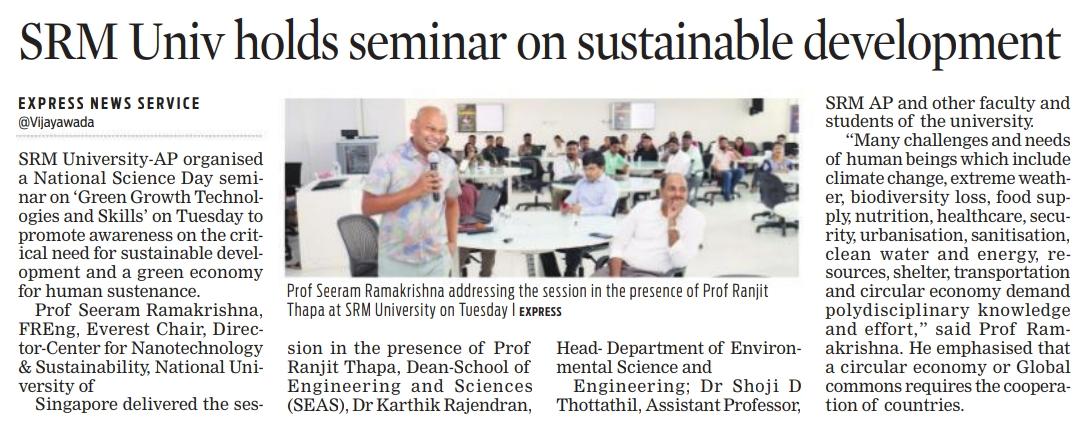
The Hindu
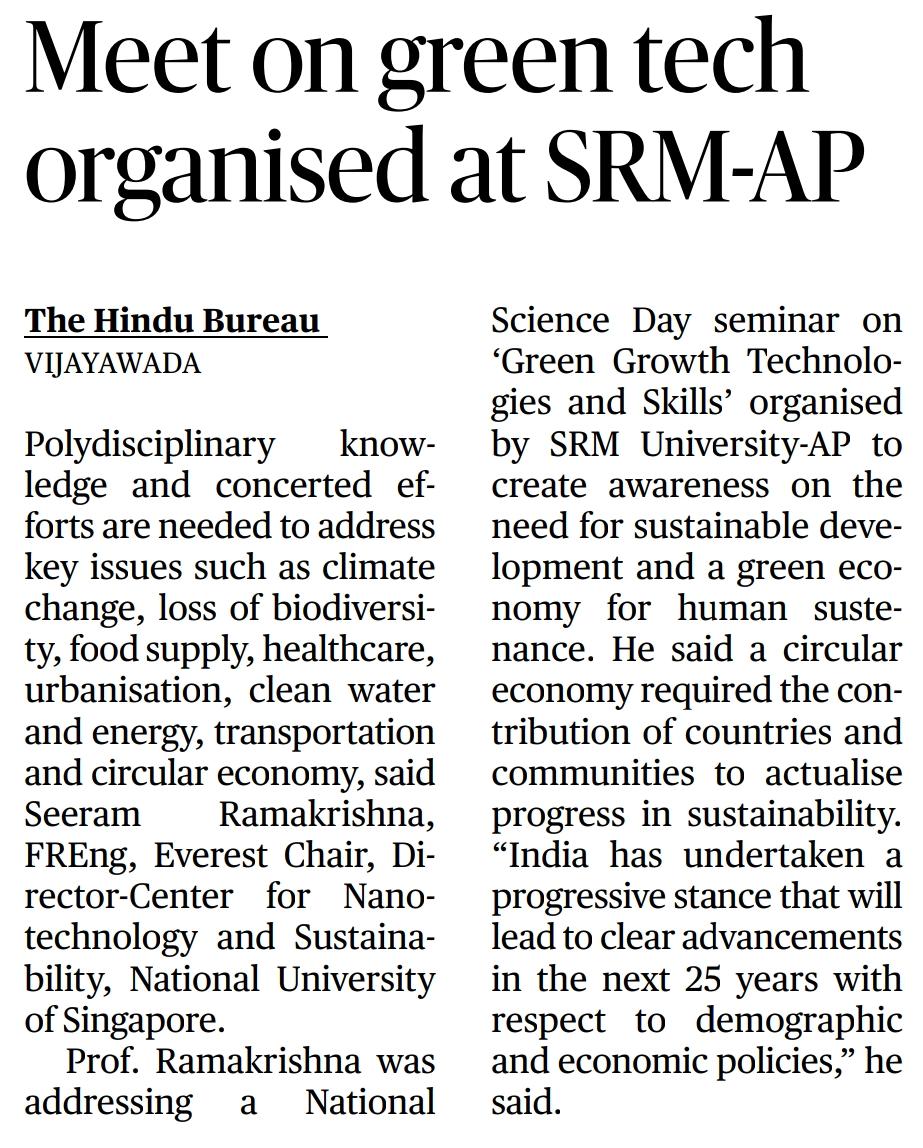
- Social Support and the Resilience Among Young Adults in Kashmir March 7, 2023
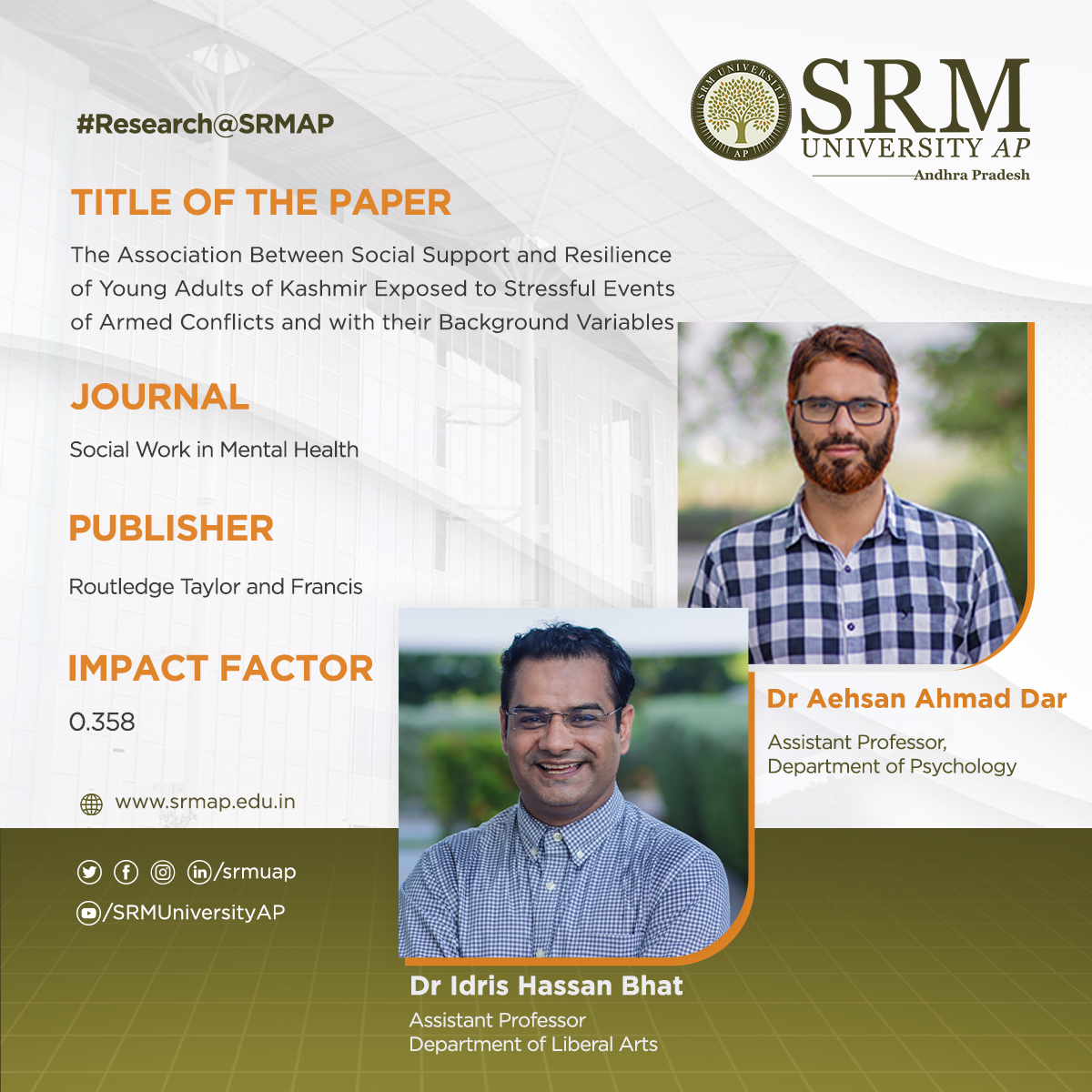 The latest research paper of Dr Aehsan Ahmad Dar, Assistant Professor, Department of Psychology, and Dr Idris Hassan Bhat, Assistant Professor, Department of Liberal Arts, examines the relationship between social support and resilience among young adults in Kashmir who have been exposed to the traumatic events of armed conflicts. His paper titled The Association Between Social Support and Resilience of Young Adults of Kashmir Exposed to Stressful Events of Armed Conflicts and with Their Background Variables was published in the esteemed journal Social Work in Mental Health, which is issued by the reputed publisher Routledge Taylor and Francis.
The latest research paper of Dr Aehsan Ahmad Dar, Assistant Professor, Department of Psychology, and Dr Idris Hassan Bhat, Assistant Professor, Department of Liberal Arts, examines the relationship between social support and resilience among young adults in Kashmir who have been exposed to the traumatic events of armed conflicts. His paper titled The Association Between Social Support and Resilience of Young Adults of Kashmir Exposed to Stressful Events of Armed Conflicts and with Their Background Variables was published in the esteemed journal Social Work in Mental Health, which is issued by the reputed publisher Routledge Taylor and Francis.Through the research, they found that social support plays a crucial role in enhancing the resilience of young adults and reducing the adverse effects of traumatic experiences. This publication is a significant contribution to the field of social work and mental health, particularly in the context of the ongoing conflict in Kashmir. The findings of the researchers highlight the importance of social support in promoting the mental health and well-being of individuals who have experienced trauma.
Abstract
The current study examined the association of social support and background variables with resilience among young adults exposed to traumatic and stressful events of armed conflict in Kashmir, India. Data were collected from 693 participants using a multi-stage sampling method. Findings revealed that social support and gender were positively associated with resilience, whereas education, income, and maternal education were negatively associated with resilience. Moreover, feeling insecure and psychologically distressed as a result of the conflict was negatively associated with resilience, whereas the perception that the Kashmir conflict would be resolved was positively associated with resilience. The findings suggest fostering resilience in this population.
Continue reading → - AADHYA’23: SRM University-AP To Conduct Week-long Women’s Day Celebrations March 7, 2023
Deccan Chronicle
Continue reading →
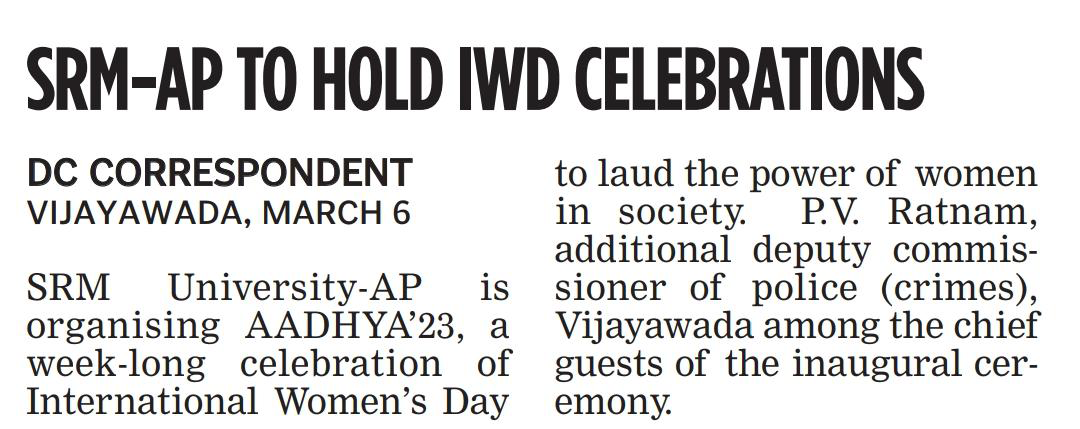
The Indian Express
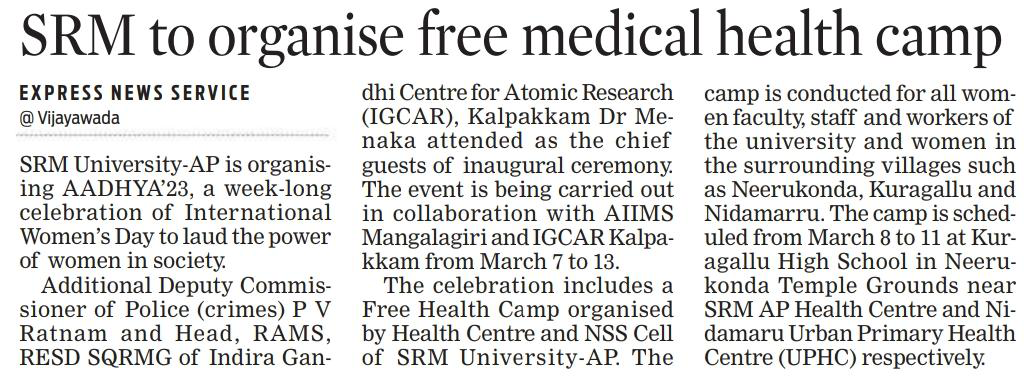
The Pioneer

The Hans India
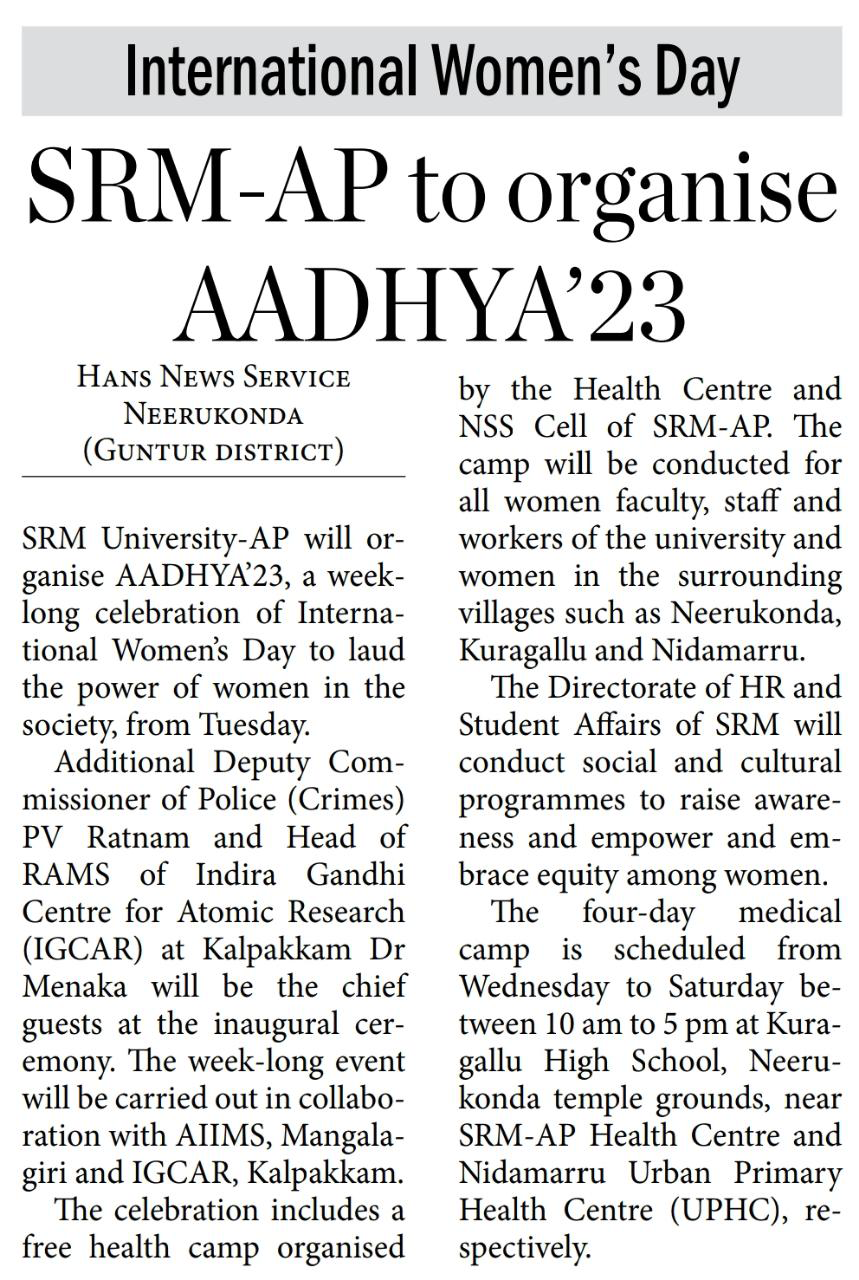
Surya
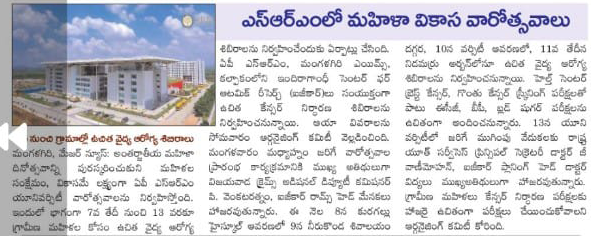
Vartha
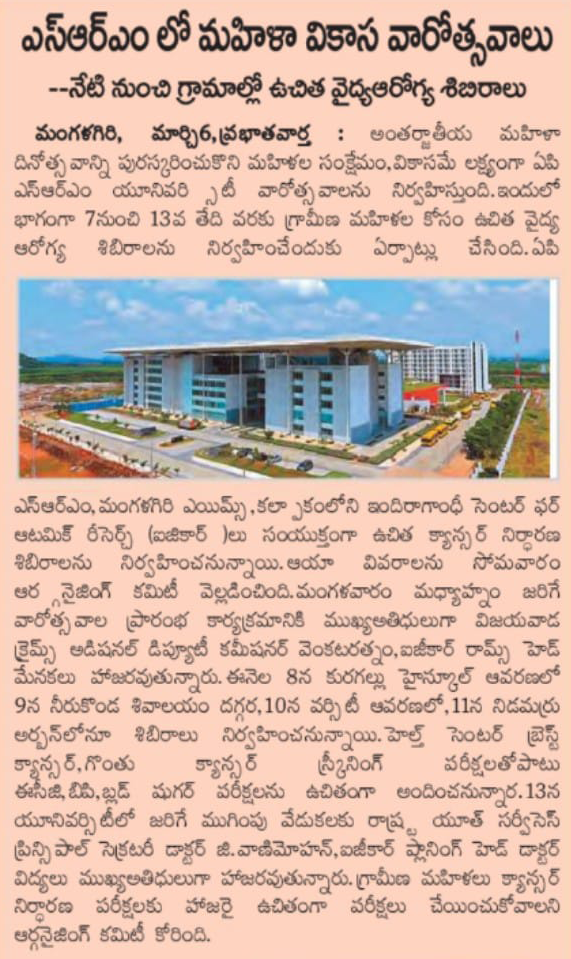
Andhra Prabha
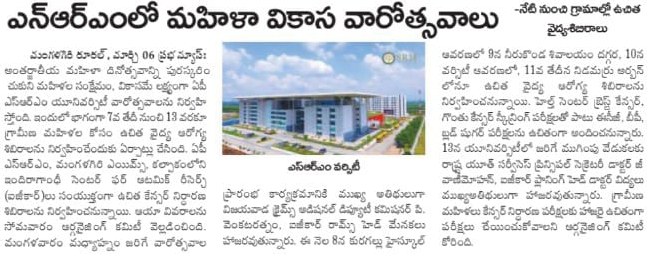
Visalandhra
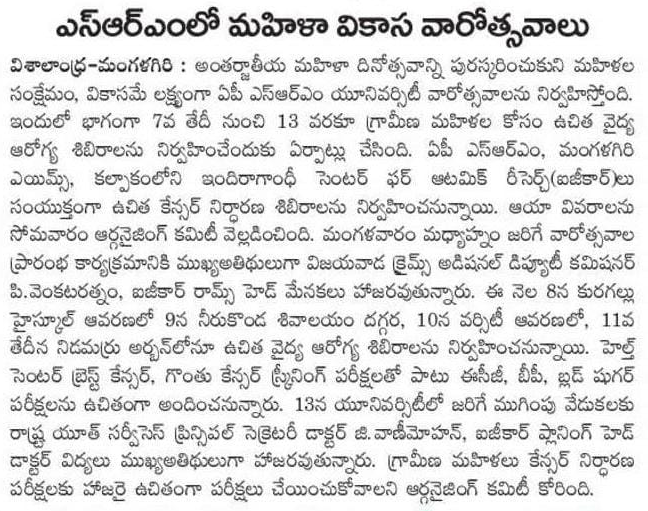
- Prof. Bharadhwaj Delivers Keynote Address at International Conference March 1, 2023
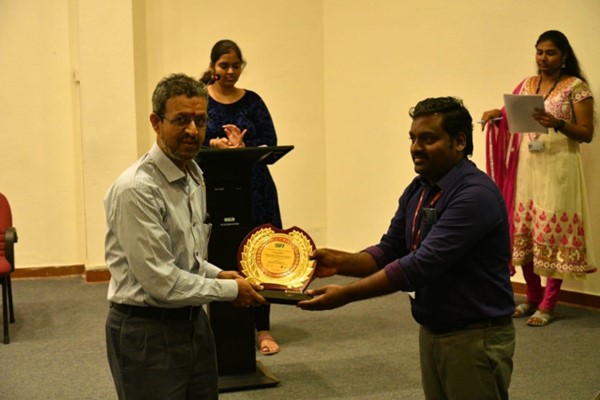
The Paari School of Business is a premier management abode for highly-qualified faculty whose expertise is spread across various fields and domains of business studies. A distinguished academician and Dean of Paari School of Business, Prof. Bharadhwaj Sivakumaran, was invited to the International Conference on Emerging Trends in Business and Management organised by SSN School of Management, Chennai, Tamil Nadu on February 24-25, 2023, to deliver the keynote address. Prof. Bharadhwaj expounded on the theme of the Conference and elaborated on his take on Business Intelligence and Analytics as drivers for Digital Transformation. Prof. Bharadhwaj also discussed the techniques involved in publishing high-quality journals and addressed numerous questions from the attendees.
Continue reading → - National Science Day Celebrations March 1, 2023
The Hindu
Continue reading →
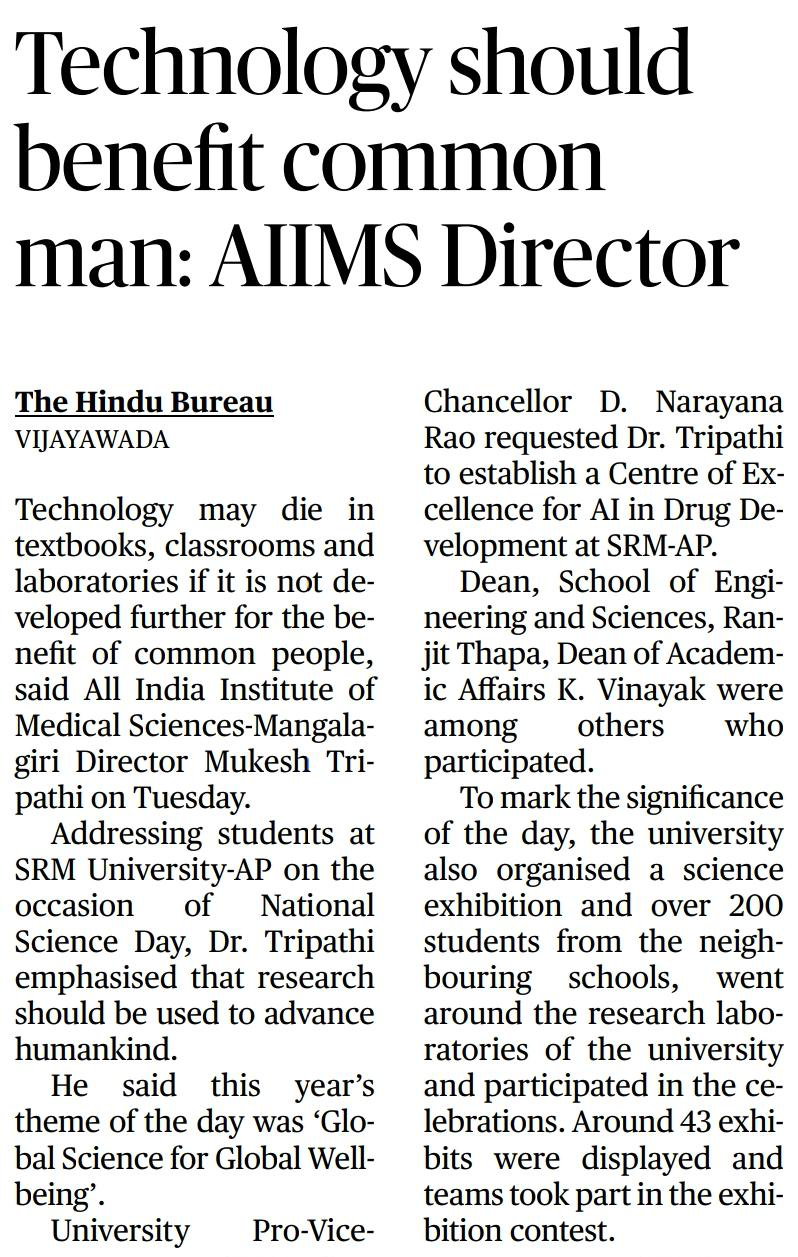
Deccan Chronicle
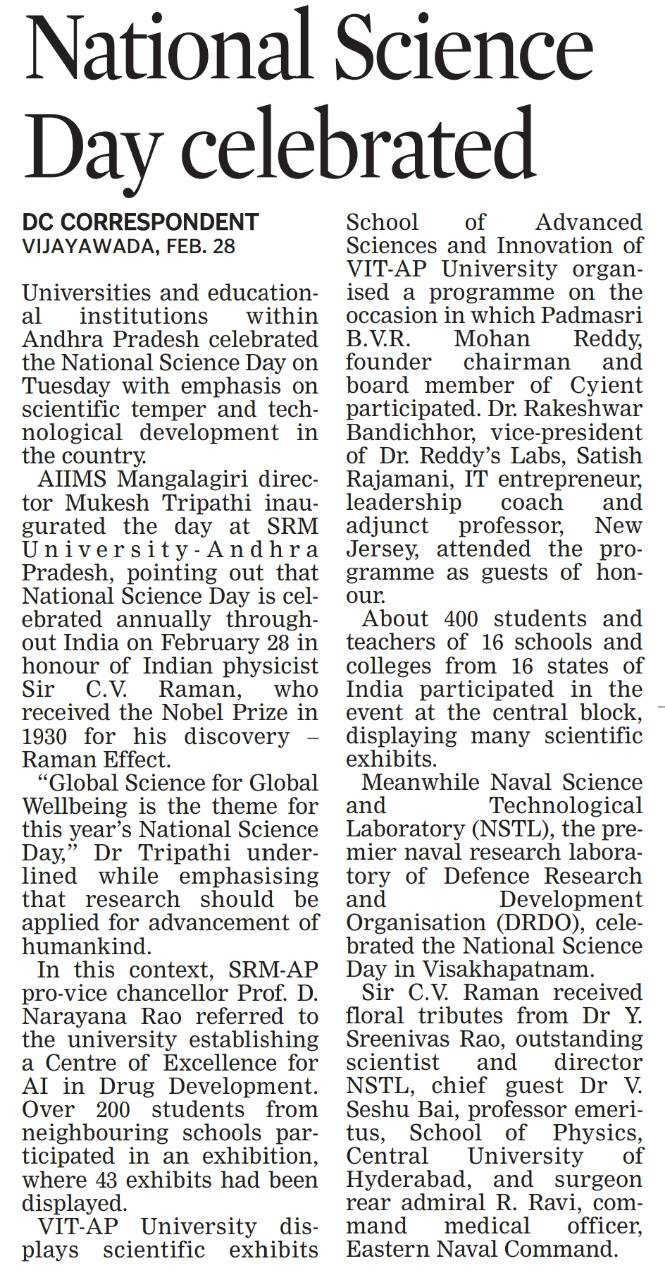
The Pioneer

The New Indian Express

The Hans India
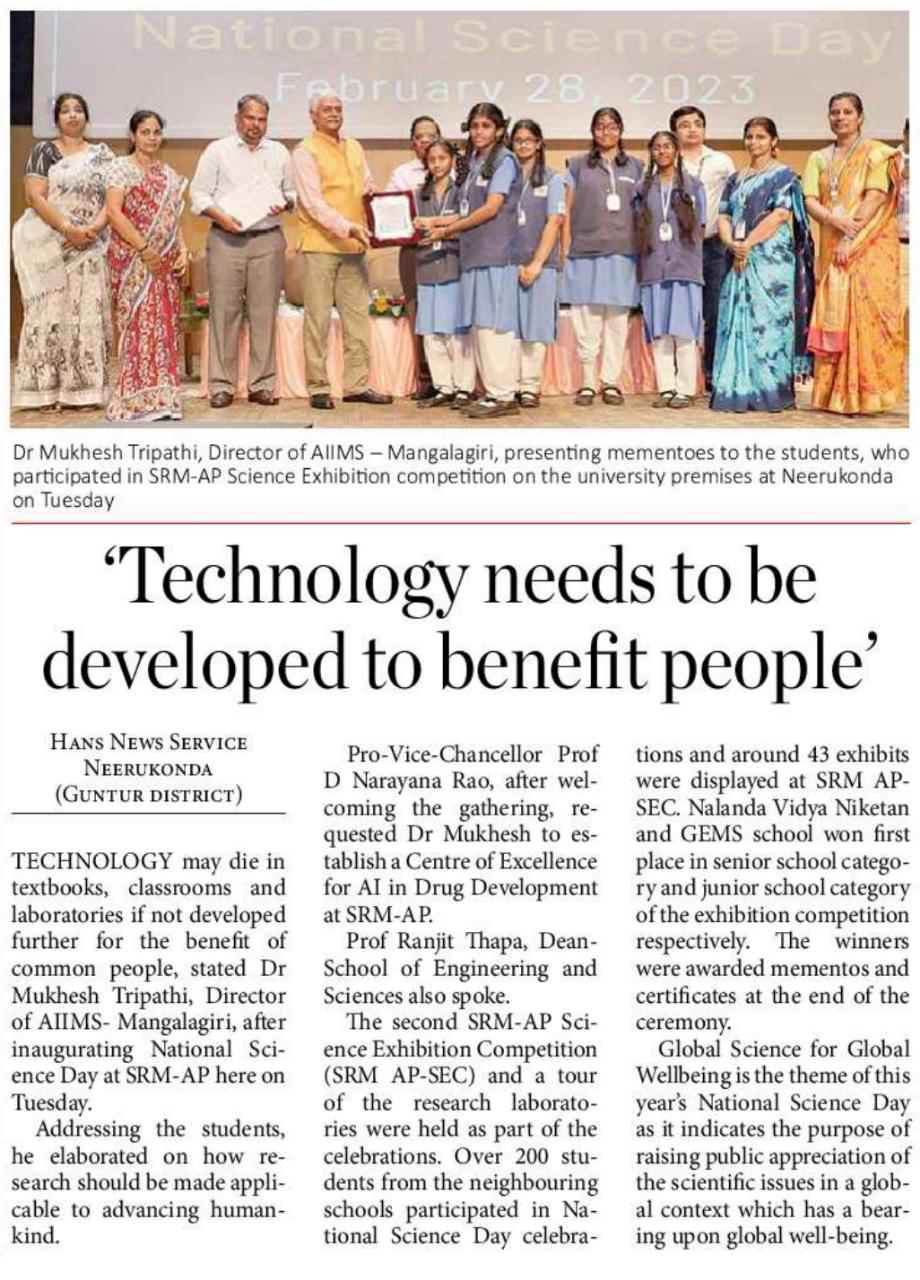
Andhra Jyoti
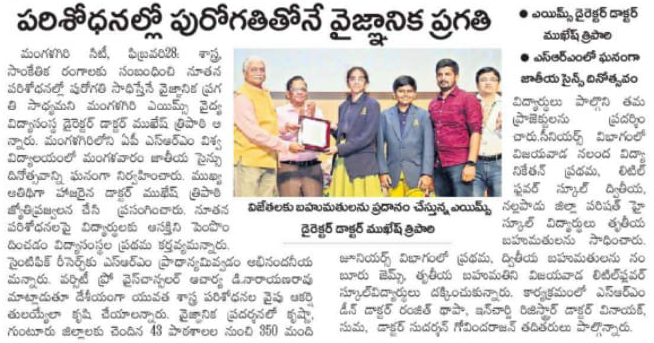
Eenadu
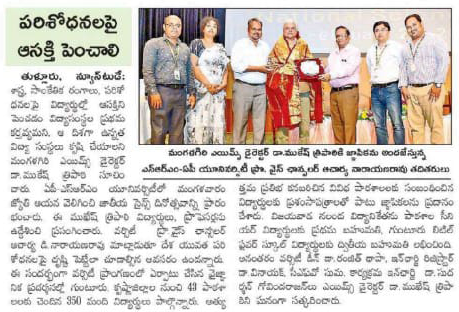
Manam
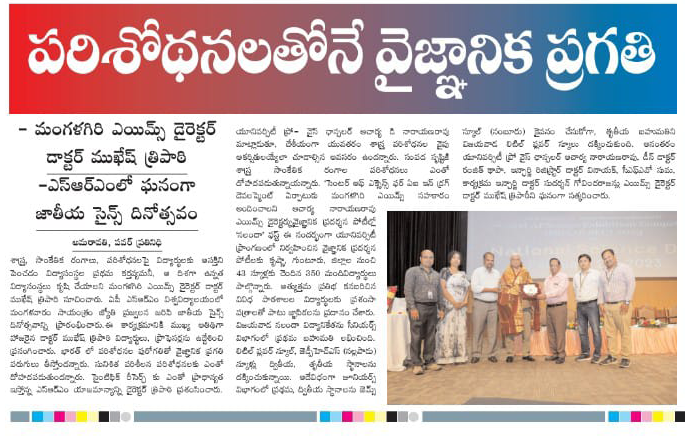
Praja Sakti
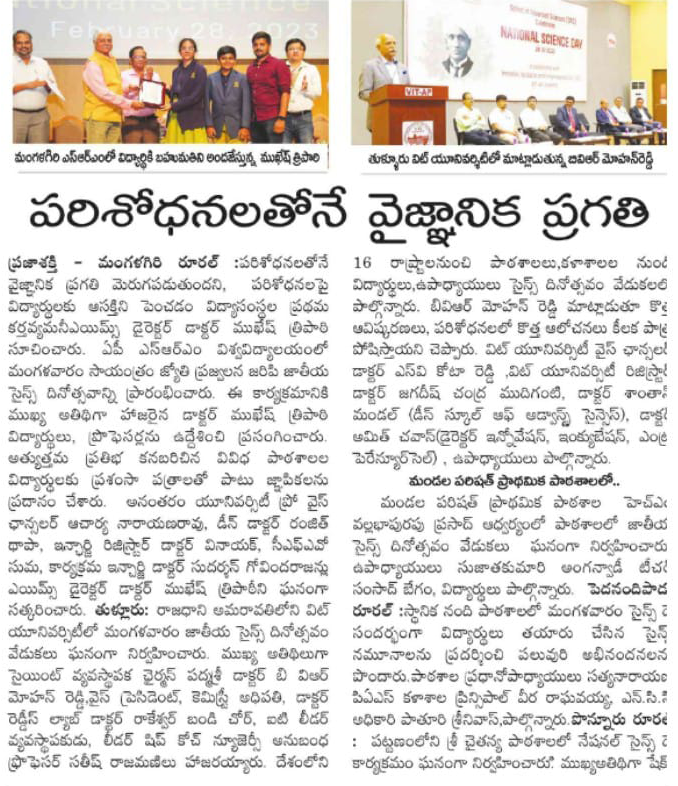
Surya

Vartha
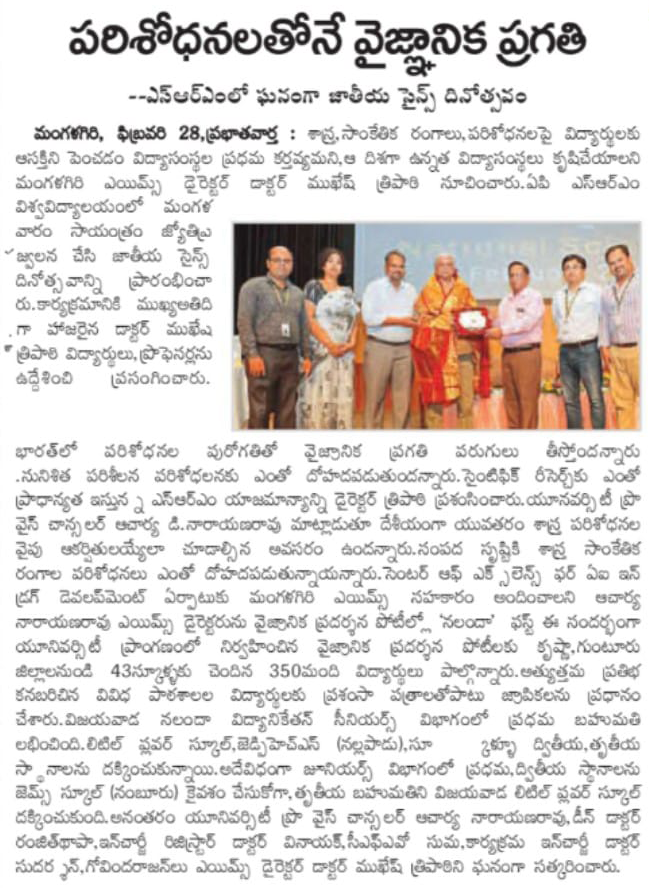
Visalandhra
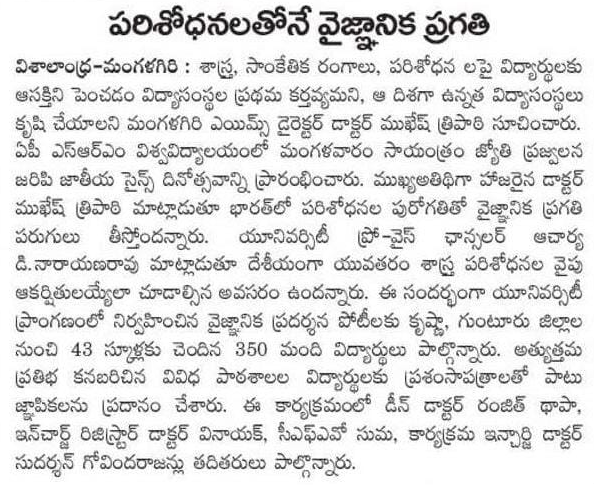
- MTech in Computer Science and Engineering | SRM University AP March 1, 2023
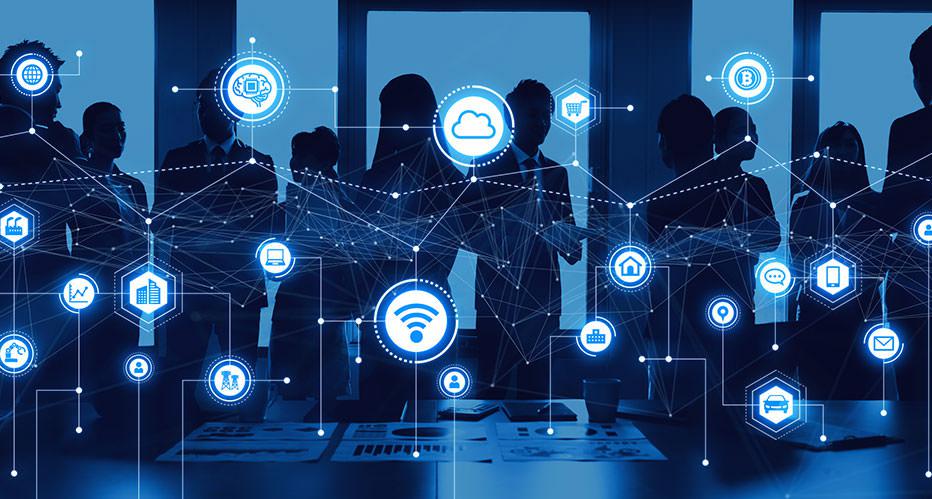
Have you always wanted to pursue a career in a specialised field? Are you considering getting an MTech degree?
If so, you’re not alone! Many people are looking to specialise in a particular field, and an MTech degree is one way to do it. This blog post will discuss what it takes to pursue an MTech degree and what to expect from this journey
Why an MTech Degree?
Benefits of Pursuing the Most Sought After Career Option
- Knowledge and Expertise in Technical Subjects
An MTech degree offers an in-depth study of a specific technical subject, allowing you to become an expert in your field. By doing MTech, you not only get knowledge about a particular area but also develop strong communication, problem-solving and analytical skills. You become eligible to work in industry and research fields that require technical expertise.
- Successful Career Prospects
With an MTech degree, one can expect better job prospects and salary packages than with other degrees. It also provides the opportunity to learn highly advanced technologies and equip yourself for a successful career in technology-based organisations. With an MTech degree, one can increase job marketability and become more attractive to potential employers.
- Gateway to Higher Studies and Research
An MTech degree opens the door to further studies or research and may lead to better job opportunities. It is an excellent way for those interested in technology to gain knowledge and better understand the field.
- Specialisations in Your Area of Interest
Aside from this, MTech can also allow students to specialise in a particular area or branch of technology and gain expertise. Moreover, it also opens the door to further research opportunities and postgraduate studies.
- Stay Ahead of the Curve
Studying MTech can be highly beneficial for those looking to advance their career or pursue academic goals in the technology field. With an MTech degree, you can stay up to date with the latest technologies and gain valuable knowledge that will benefit your career and personal life. You can stay ahead of the curve and keep up with the rapidly changing technology industry.
Are you looking for a promising MTech Programme?
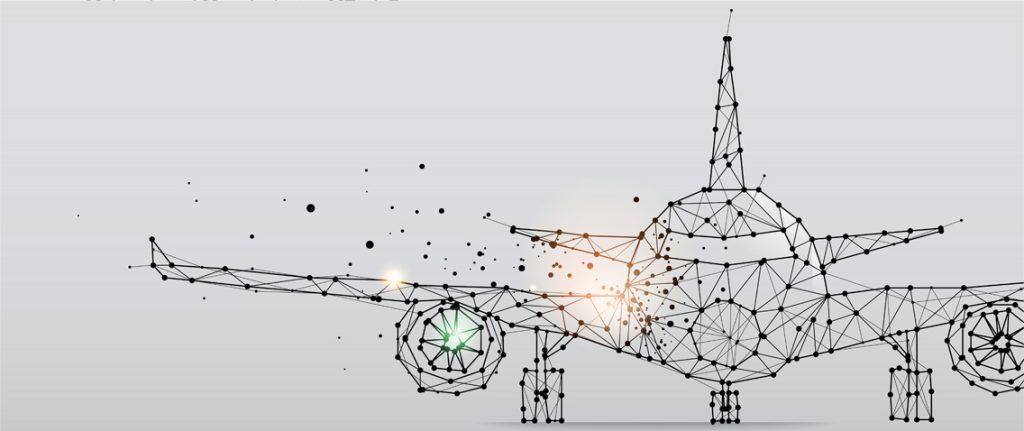
The Large Umbrella of MTech Programmes
An MTech degree offers a specialised and advanced education that can give graduates an edge in the job market.
- Materials and Manufacturing MTech Programmes
Materials and Manufacturing MTech programmes provide a deep understanding of Materials Science, Materials Engineering, and Manufacturing processes, which can be applied to a wide range of industries.
Graduates with a Materials and Manufacturing MTech degree can access rewarding and well-paying positions in areas such as,
-
- Aerospace engineering
- Automotive engineering
- Biomedical engineering
– that require expertise in materials and manufacturing technology.
The practical knowledge gained from Materials and Manufacturing MTech studies can help develop new materials for use in production pipelines or create innovative manufacturing processes that streamline production times whilst improving quality control, making the Materials and Manufacturing MTech degree beneficial to the individual graduate and employers alike.
- Surplus Opportunities to Work on Research Projects
Pursuing an MTech degree provides opportunities to work on research projects, which can create networking opportunities and help you hone your skills.
For example, Thermal MTech students get to explore the fascinating field of Thermal engineering, such as Thermal design and Thermal analysis.
They also get to work on projects related to,
-
- Thermal energy management
- Thermal systems design
- Thermal control systems.
- The Bright Side of Thermal Engineering
Working on research projects in Thermal engineering can also give students an edge in the industry as it enhances their understanding of Thermal principles and technologies.
Valuable industry experience and essential connections in the Thermal engineering field through their research work.
All these advantages make pursuing an MTech degree worthwhile for those interested in Thermal engineering.
MTech provides invaluable insight into the latest breakthroughs and technologies in your field, helping you stay ahead of the curve.
Studying for an MTech can provide immense advantages for those in the technological field, particularly IoT technologies. Not only does it offer the opportunity to gain higher qualifications and broaden skills, but it can also provide invaluable insight into the latest IoT breakthroughs and technologies, helping students stay ahead of the curve.
- The Perks of an MTech in VLSI
An MTech in VLSI will allow you to develop advanced knowledge and skills, making a VLSI engineer highly sought after in many industries. As a VLSI engineer, you can work with hardware design, device fabrication, circuit design and debugging, amongst other skills, which will give you a competitive edge over other job applicants.
- Possibilities of the Internet of Things (IoT)
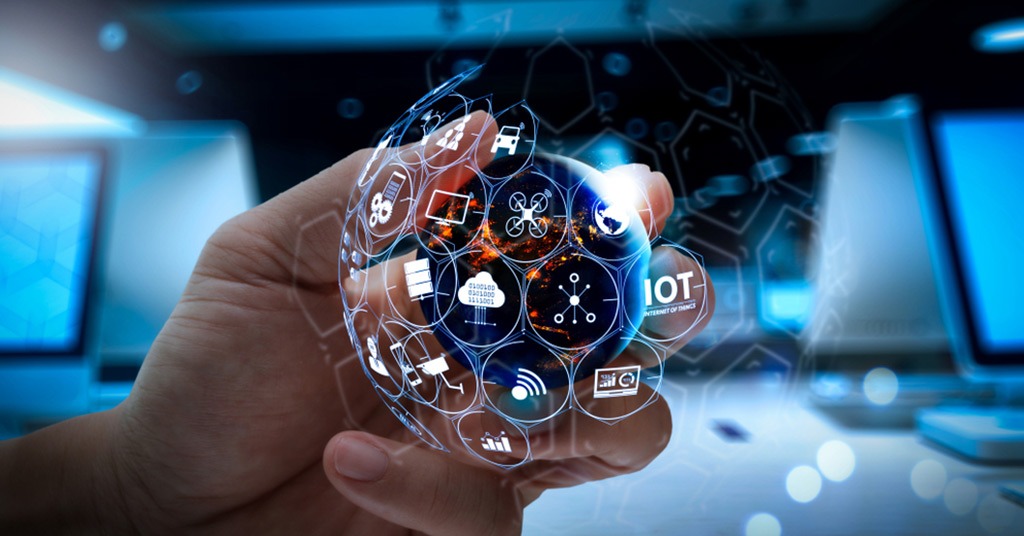
IoT (Internet of Things) related coursework provides students with comprehensive technical and practical insight into IoT systems development. Technical topics like IoT architecture, IoT standards and IoT security are taught in detail, enabling those who complete the program to gain specialised knowledge in the IoT domain.
Furthermore, the programme also typically offers a research-based thesis which enables students to apply their IOT skills to real-world problems. In this way, MTech programmes provide an excellent opportunity for students to understand IoT systems and technologies deeply.
What to Expect From an MTech Degree?
-
- Opportunity to develop their professional skills through hands-on projects and internships
- Opportunity to become experts in Data Science and its associated technologies.
- Data Science is a rapidly evolving field, and an MTech will provide the guidance needed to stay current and be at the forefront of Data Science development.
- Provides students with the ability to gain a deeper understanding of Data Science and its applications, which can help them get better jobs or progress their careers.
Where Will You Be After graduation?
Upon graduation, MTech graduates are highly sought after in the job market, with many top companies offering competitive salaries for those with an MTech degree.
Furthermore, an MTech degree is a tremendous advantage as Thermal graduates are highly sought after in the job market.
Thermal graduates have specialised knowledge, making them more attractive to companies and often offered competitive salaries.
An MTech degree provides Thermal graduates with unique skills and qualifications that make them stand out in the job market and ensure they have a competitive advantage over other applicants.
Making the Most of Your MTech Degree; Yes That’s What Makes the difference!
With an MTech degree, you can pursue a plethora of career options.
What are the Most Coveted Career Options After MTech?
-
-
- Engineering
- Research and development
- Data science
- Materials and Manufacturing
-
- The Scope of Materials and Manufacturing
Materials and Manufacturing are two areas often explored in an MTech course.
-
-
- Provide you with knowledge of materials used in industries and hands-on experience working with them.
- Access to other related fields, such as chemical engineering and robotics.
- Enable you to develop expertise in manufacturing processes, including production planning, cost control and product design.
- On completing the degree, you can embark on a career as a Materials and Manufacturing Engineer with high growth prospects.
- Exclusive job opportunities in the government sector.
-
- The Future of MTech in VLSI
MTech in VLSI empowers students to get VLSI-related roles in the government and even industries like Aerospace, Medical electronics, Automotive industry, etc.
VLSI has become a popular technology due to its versatility in processing large amounts of data without lags. With the proper knowledge and specialised skillset gained through the course, you will be able to face the challenges of a competitive job market more confidently.
What is Stopping You From Grabbing That MTech Degree!
Pursuing an MTech degree can be a rewarding experience. It is an opportunity to gain the skills and knowledge needed to pursue specialised careers in your field of study.
With a vast range of opportunities that come with gaining an MTech degree, it is worth considering if you’re looking for specialised training and education.
With hard work and dedication, you can find great success in your chosen career after completing your MTech degree!
You are just a click away from pursuing your dream MTech Degree!
Continue reading →
SRM University-AP celebrated National Science Day on Tuesday, February 28, 2023, to promote scientific temper and encourage scientific development in the country. National Science Day is celebrated annually on February 28th to honour the discovery of the Raman Effect by Indian physicist Sir C V Raman, who received the Nobel Prize in 1930 for his discovery. Dr Mukhesh Tripathi, Director, AIIMS, Mangalagiri, inaugurated the celebrations at SRM University-AP.
“Technology may die with you in the textbooks, classrooms and laboratories if not developed further for the benefit of common people, “said Dr Mukhesh Tripathi as he addressed the students and elaborated on how research should be made applicable to advancing humankind. Prof. D Narayana Rao, Pro-Vice-Chancellor of SRM AP, delivered the welcome address. He requested the Chief Guest to establish a Centre of Excellence for AI in Drug Development at SRM AP. Prof. Ranjit Thapa, Dean-School of Engineering and Sciences, SRM AP, introduced the Chief Guest. Prof. D Narayana Rao felicitated the Chief Guest with a memento. The dignitaries interacted with the students and answered their queries about recent advancements in science and technology. Dr Vinayak Kalluri, Dean-Academic Affairs, SRM AP, gave the vote of thanks.
The Second SRM AP Science Exhibition Competition (SRM AP-SEC) and a Tour of the Research Laboratories of SRM AP were also held as part of the celebrations. Over 200 students from the neighbouring schools participated in the National Science Day celebrations, and around 43 exhibits were displayed at SRM AP-SEC. Nalanda Vidya Niketan and GEMS school won first place in the senior school category and junior school category of the exhibition competition, respectively. The winners were awarded mementoes and certificates at the end of the ceremony.
Global Science for Global Wellbeing is the theme of this year’s National Science Day as it indicates the purpose of raising public appreciation of the scientific issues in a global context which has a bearing upon global well-being.
Continue reading →
Have you always wanted to pursue a career in a specialised field? Are you considering getting an MTech degree?
If so, you’re not alone! Many people are looking to specialise in a particular field, and an MTech degree is one way to do it. This blog post will discuss what it takes to pursue an MTech degree and what to expect from this journey
Why an MTech Degree?
Benefits of Pursuing the Most Sought After Career Option
- Knowledge and Expertise in Technical Subjects
An MTech degree offers an in-depth study of a specific technical subject, allowing you to become an expert in your field. By doing MTech, you not only get knowledge about a particular area but also develop strong communication, problem-solving and analytical skills. You become eligible to work in industry and research fields that require technical expertise.
- Successful Career Prospects
With an MTech degree, one can expect better job prospects and salary packages than with other degrees. It also provides the opportunity to learn highly advanced technologies and equip yourself for a successful career in technology-based organisations. With an MTech degree, one can increase job marketability and become more attractive to potential employers.
- Gateway to Higher Studies and Research
An MTech degree opens the door to further studies or research and may lead to better job opportunities. It is an excellent way for those interested in technology to gain knowledge and better understand the field.
- Specialisations in Your Area of Interest
Aside from this, MTech can also allow students to specialise in a particular area or branch of technology and gain expertise. Moreover, it also opens the door to further research opportunities and postgraduate studies.
- Stay Ahead of the Curve
Studying MTech can be highly beneficial for those looking to advance their career or pursue academic goals in the technology field. With an MTech degree, you can stay up to date with the latest technologies and gain valuable knowledge that will benefit your career and personal life. You can stay ahead of the curve and keep up with the rapidly changing technology industry.
Are you looking for a promising MTech Programme?

The Large Umbrella of MTech Programmes
An MTech degree offers a specialised and advanced education that can give graduates an edge in the job market.
- Materials and Manufacturing MTech Programmes
Materials and Manufacturing MTech programmes provide a deep understanding of Materials Science, Materials Engineering, and Manufacturing processes, which can be applied to a wide range of industries.
Graduates with a Materials and Manufacturing MTech degree can access rewarding and well-paying positions in areas such as,
-
- Aerospace engineering
- Automotive engineering
- Biomedical engineering
– that require expertise in materials and manufacturing technology.
The practical knowledge gained from Materials and Manufacturing MTech studies can help develop new materials for use in production pipelines or create innovative manufacturing processes that streamline production times whilst improving quality control, making the Materials and Manufacturing MTech degree beneficial to the individual graduate and employers alike.
- Surplus Opportunities to Work on Research Projects
Pursuing an MTech degree provides opportunities to work on research projects, which can create networking opportunities and help you hone your skills.
For example, Thermal MTech students get to explore the fascinating field of Thermal engineering, such as Thermal design and Thermal analysis.
They also get to work on projects related to,
- Thermal energy management
- Thermal systems design
- Thermal control systems.
- The Bright Side of Thermal Engineering
Working on research projects in Thermal engineering can also give students an edge in the industry as it enhances their understanding of Thermal principles and technologies.
Valuable industry experience and essential connections in the Thermal engineering field through their research work.
All these advantages make pursuing an MTech degree worthwhile for those interested in Thermal engineering.
MTech provides invaluable insight into the latest breakthroughs and technologies in your field, helping you stay ahead of the curve.
Studying for an MTech can provide immense advantages for those in the technological field, particularly IoT technologies. Not only does it offer the opportunity to gain higher qualifications and broaden skills, but it can also provide invaluable insight into the latest IoT breakthroughs and technologies, helping students stay ahead of the curve.
- The Perks of an MTech in VLSI
An MTech in VLSI will allow you to develop advanced knowledge and skills, making a VLSI engineer highly sought after in many industries. As a VLSI engineer, you can work with hardware design, device fabrication, circuit design and debugging, amongst other skills, which will give you a competitive edge over other job applicants.
- Possibilities of the Internet of Things (IoT)

IoT (Internet of Things) related coursework provides students with comprehensive technical and practical insight into IoT systems development. Technical topics like IoT architecture, IoT standards and IoT security are taught in detail, enabling those who complete the program to gain specialised knowledge in the IoT domain.
Furthermore, the programme also typically offers a research-based thesis which enables students to apply their IOT skills to real-world problems. In this way, MTech programmes provide an excellent opportunity for students to understand IoT systems and technologies deeply.
What to Expect From an MTech Degree?
-
- Opportunity to develop their professional skills through hands-on projects and internships
- Opportunity to become experts in Data Science and its associated technologies.
- Data Science is a rapidly evolving field, and an MTech will provide the guidance needed to stay current and be at the forefront of Data Science development.
- Provides students with the ability to gain a deeper understanding of Data Science and its applications, which can help them get better jobs or progress their careers.
Where Will You Be After graduation?
Upon graduation, MTech graduates are highly sought after in the job market, with many top companies offering competitive salaries for those with an MTech degree.
Furthermore, an MTech degree is a tremendous advantage as Thermal graduates are highly sought after in the job market.
Thermal graduates have specialised knowledge, making them more attractive to companies and often offered competitive salaries.
An MTech degree provides Thermal graduates with unique skills and qualifications that make them stand out in the job market and ensure they have a competitive advantage over other applicants.
Making the Most of Your MTech Degree; Yes That’s What Makes the difference!
With an MTech degree, you can pursue a plethora of career options.
What are the Most Coveted Career Options After MTech?
-
-
- Engineering
- Research and development
- Data science
- Materials and Manufacturing
-
- The Scope of Materials and Manufacturing
Materials and Manufacturing are two areas often explored in an MTech course.
-
-
- Provide you with knowledge of materials used in industries and hands-on experience working with them.
- Access to other related fields, such as chemical engineering and robotics.
- Enable you to develop expertise in manufacturing processes, including production planning, cost control and product design.
- On completing the degree, you can embark on a career as a Materials and Manufacturing Engineer with high growth prospects.
- Exclusive job opportunities in the government sector.
-
- The Future of MTech in VLSI
MTech in VLSI empowers students to get VLSI-related roles in the government and even industries like Aerospace, Medical electronics, Automotive industry, etc.
VLSI has become a popular technology due to its versatility in processing large amounts of data without lags. With the proper knowledge and specialised skillset gained through the course, you will be able to face the challenges of a competitive job market more confidently.
What is Stopping You From Grabbing That MTech Degree!
Pursuing an MTech degree can be a rewarding experience. It is an opportunity to gain the skills and knowledge needed to pursue specialised careers in your field of study.
With a vast range of opportunities that come with gaining an MTech degree, it is worth considering if you’re looking for specialised training and education.
With hard work and dedication, you can find great success in your chosen career after completing your MTech degree!
You are just a click away from pursuing your dream MTech Degree!
Continue reading →


